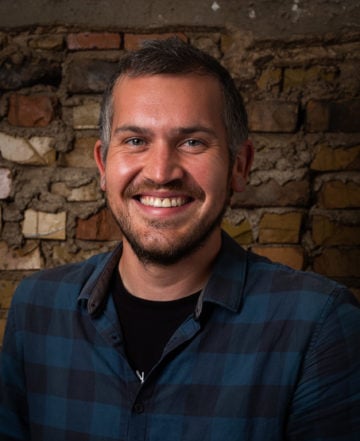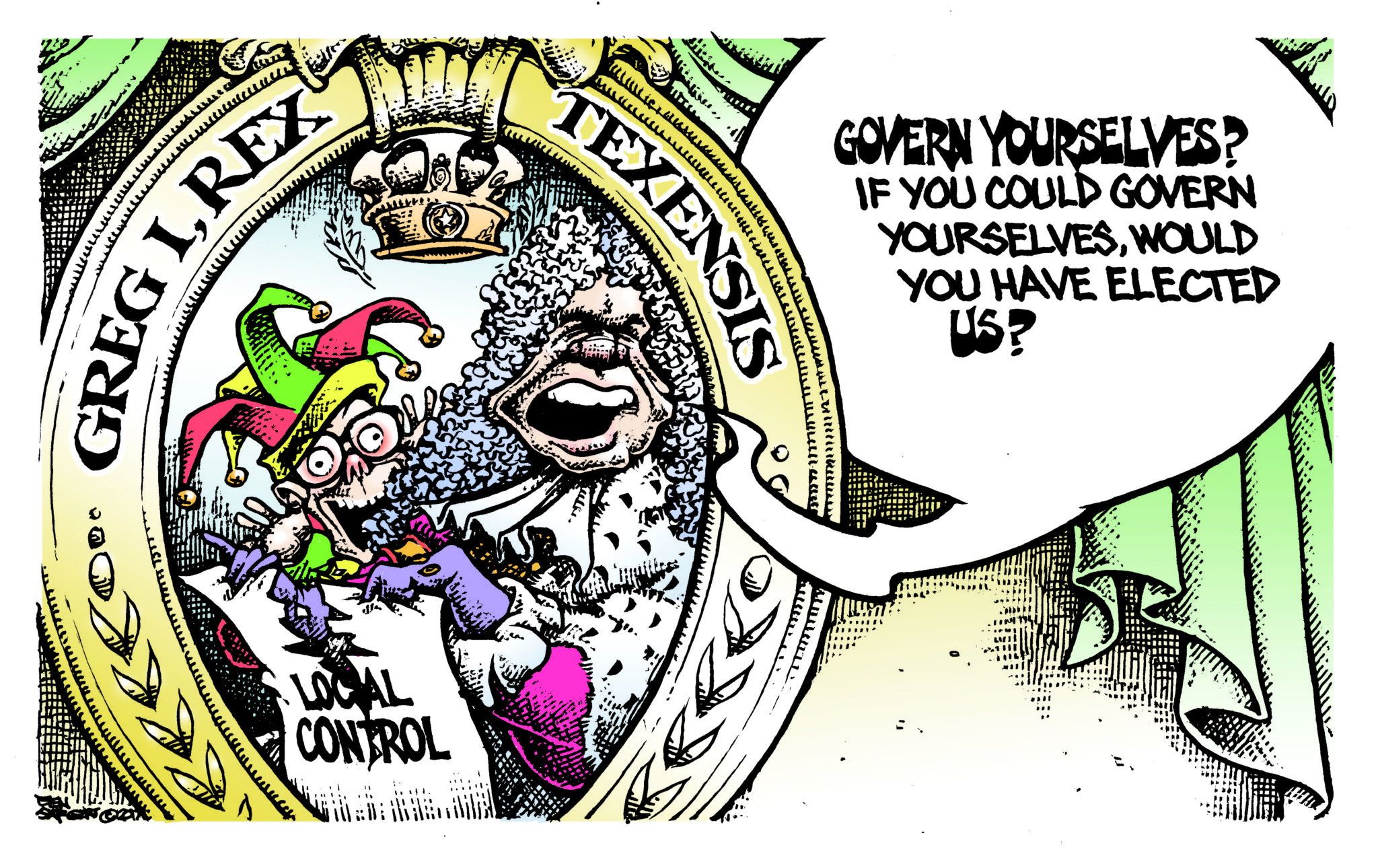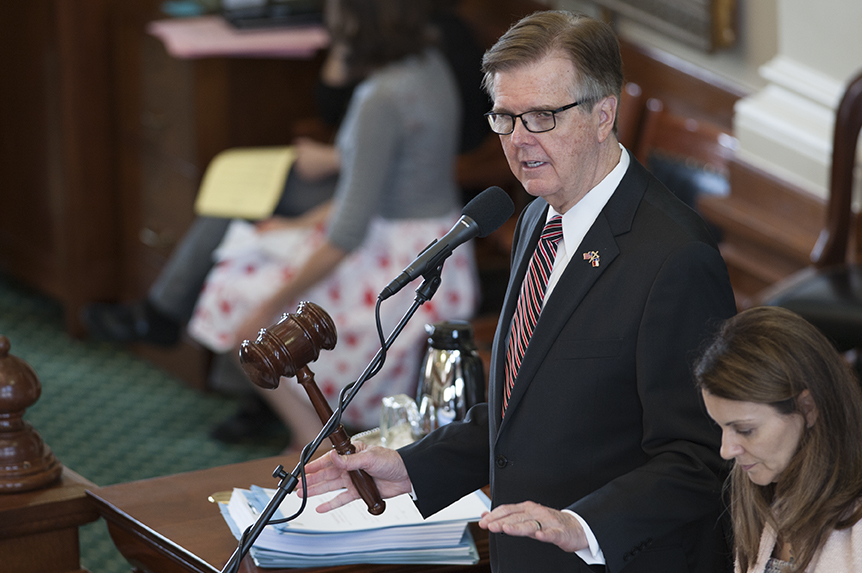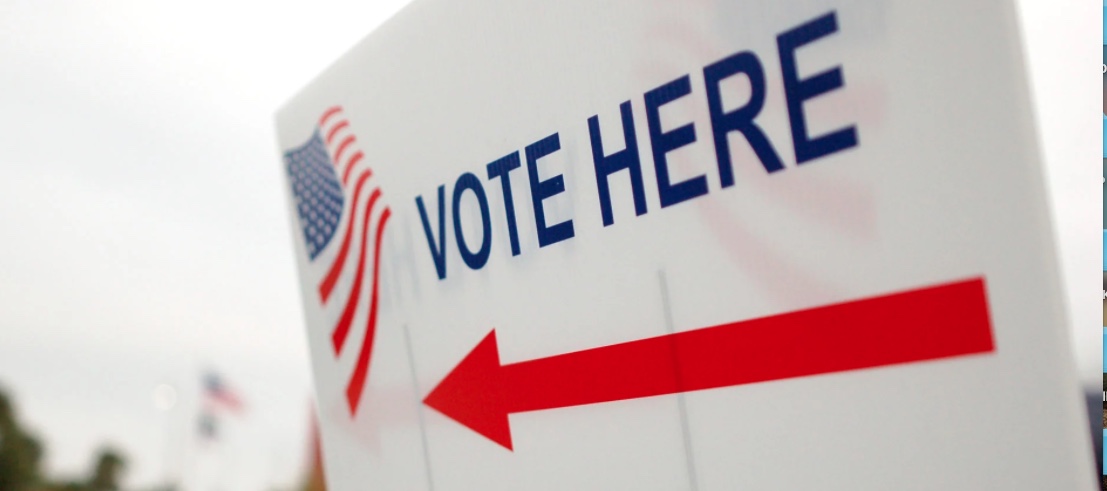Compassionate Cop? Taking a Hard Look at Lupe Valdez’s Record as Dallas Sheriff
At best, Lupe Valdez embraced reforms that years of scandal had forced upon the Dallas County jail. At worst, she downplayed problems and withheld information on jail deaths in the post-Sandra Bland era.
–
by Michael Barajas
@michaelsbarajas
February 19, 2018
When Dallas County Sheriff Lupe Valdez gave her prime-time speech at the Democratic National Convention in 2016, she faced a tough task. Viral videos of police violence had again triggered unrest across the nation. Earlier that month, Baton Rouge cops had gunned down Alton Sterling, followed by the on-camera killing of Philando Castile in Minnesota. Then, at a rally against police brutality in downtown Dallas on July 7, a veteran fired on officers, killing five and wounding several others.
Three weeks after the Dallas ambush, Valdez, dressed in her sheriff’s uniform, delivered her DNC speech inside Philadelphia’s Wells Fargo Center. She recounted how her father, a migrant farmworker, was angry when he found out she wanted to pursue a career in law enforcement. “He and my older brothers had been beaten by the police for no legitimate reason,” she told the audience. But Valdez stuck with the profession, and after working her way from jail guard to federal agent, in 2004 she was elected the nation’s first queer, Latina sheriff.
Valdez began her DNC speech acknowledging the brutality of the past but ended it defending the police of today. She presented herself as both an odds-defying reformer and a steady law-and-order Democrat. Before leading the crowd in a moment of silence for fallen police, Valdez delivered a line she’d later incorporate into her campaign speeches for governor: “We put on our badge every day to serve and protect, not to hate and discriminate.” The Los Angeles Times called her speech “a key point of rebuttal for Democrats,” whom Donald Trump had accused of ignoring the needs of law enforcement.
In December, Valdez resigned as sheriff so she could enter the Democratic primary for governor. She’s the only candidate in the 10-way race with any degree of name recognition, due in part to a grudge match with Governor Greg Abbott over the handling of immigrants detained at her jail.
When Valdez entered the governor’s race, conventional wisdom labeled her the party establishment’s pick for much the same reason pundits lauded her 2016 speech at the DNC: intersectional appeal. Sure, Valdez wasn’t exactly their first choice, but none of the party’s rising stars would touch the race after Abbott’s 20-point trouncing of Wendy Davis four years ago. At least a top-of-the-ticket candidate like Valdez, the thinking went, could help boost turnout among progressive and Hispanic voters, which Texas Democrats desperately need if they hope to ever again win a statewide race.
“I am the Democratic Party,” Valdez told the Observer in a brief interview this month. “Look at me. I’m Hispanic, lesbian, I’ve been the sheriff of Dallas County for the last 13 years. I not only represent law and order, I represent compassion.”
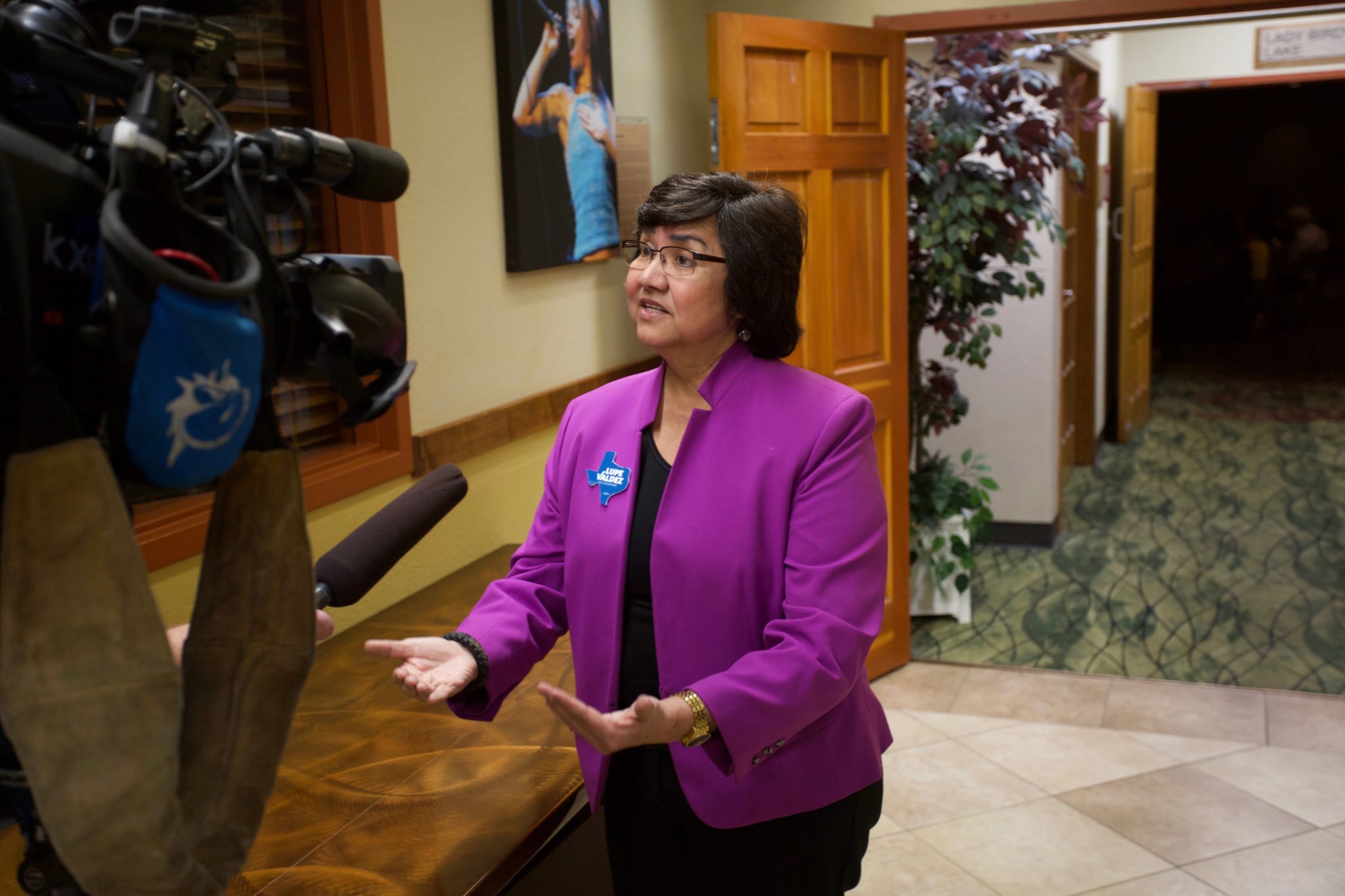
Two months into the race, however, Valdez has struggled to meet even those low-bar expectations. In a single week early this month, she lost three major endorsements to the “outsider” candidate who’s emerged as her main primary opponent, Andrew White, the “deeply, personally pro-life” son of the late former governor Mark White Jr. and a self-described “common sense” moderate. The most stinging snub came from the oldest gay rights organization in the South, the Houston GLBT Caucus, whose members say they wanted to endorse Valdez but felt they couldn’t after her disaster of a screening.
But it’s not her missteps as a candidate that should interest voters the most, but rather her record as sheriff. She’s made her experience running the department a central selling point for her candidacy, and, like that DNC speech, she seeks to present herself as a progressive law enforcer. At campaign stops, she tells voters her experience reforming the “good ol’ boy system” at the Dallas County Sheriff’s Department and cleaning up its squalid jail qualifies her to be governor. But other assessments of her 13-year tenure aren’t so generous. The day she announced her run for governor, the Dallas Morning News editorial board called Valdez’s record as sheriff borderline disqualifying, scolding her for “transparency-resistant tendencies, especially in regard to prisoner deaths and other violent incidents.”
Many with a stake in the jail say Valdez was at best a sheriff who embraced changes that years of scandal had forced upon her department. At worst, she was a law enforcement official who downplayed problems that continued at the lockup and even suppressed information on jail deaths in the post-Sandra Bland era.
–
When she was first elected Dallas County sheriff in 2004, many in the media fixated on Valdez’s identity. “Any one description — female, Latina, Democrat and openly gay — would have qualified Valdez’s election as Dallas County sheriff for the local history books,” the Washington Post mused. “But all four?”
Valdez was the first Democrat elected to the county post in a quarter century, and many saw in her a harbinger of urban Texas’ growing Democratic and Latino electorate. Many also welcomed her as a change agent in a department rattled by allegations of cronyism and corruption.
Her predecessor was indicted for allegedly profiting from a commissary contract at the jail, though the charge was later dropped. She also inherited what some county officials called “the jail from hell,” a hulking county detention complex that can house more than 7,100 inmates at any given time and employs about 900 government workers.
“I am the Democratic Party. Look at me. I’m Hispanic, lesbian, I’ve been the sheriff of Dallas County for the last 13 years. I not only represent law and order, I represent compassion.”
The same year voters elected Valdez, state jail inspectors scolded the department for, among other things, overcrowding an understaffed facility and failing to properly screen inmates for health problems. Inspectors caught jailers cramming more than 100 inmates into holding cells designed for less than half that many people.
In the months between Valdez’s election and her swearing-in, the families of three mentally ill inmates sued the county over their treatment at the jail. One inmate died after guards withheld his medication for days. Another, who was also denied meds, nearly died from severe dehydration and kidney failure when jailers cut off water to his cell for two weeks. The lawsuit also cited another inmate diagnosed with paranoid schizophrenia who was released by the jail without meds or help of any kind, only to be found days later suffering from fever, dehydration and seizures. In other words, Valdez had her work cut out for her.
But in late 2006, nearly two years into her first term as sheriff, the U.S. Justice Department investigated the jail and concluded that officials still regularly violated the rights of inmates. Its scathing report on jail conditions documented at least 11 inmate deaths that could have been prevented. It also described woefully unprepared guards who hadn’t been trained on monitoring suicidal inmates and couldn’t recall basic emergency procedures at the jail. In 2007, the Justice Department sued the county to force change, and eventually the two sides forged a settlement that required the building of a new jail infirmary. The feds also made Valdez subject her detention centers to inspections by federal monitors every six months.
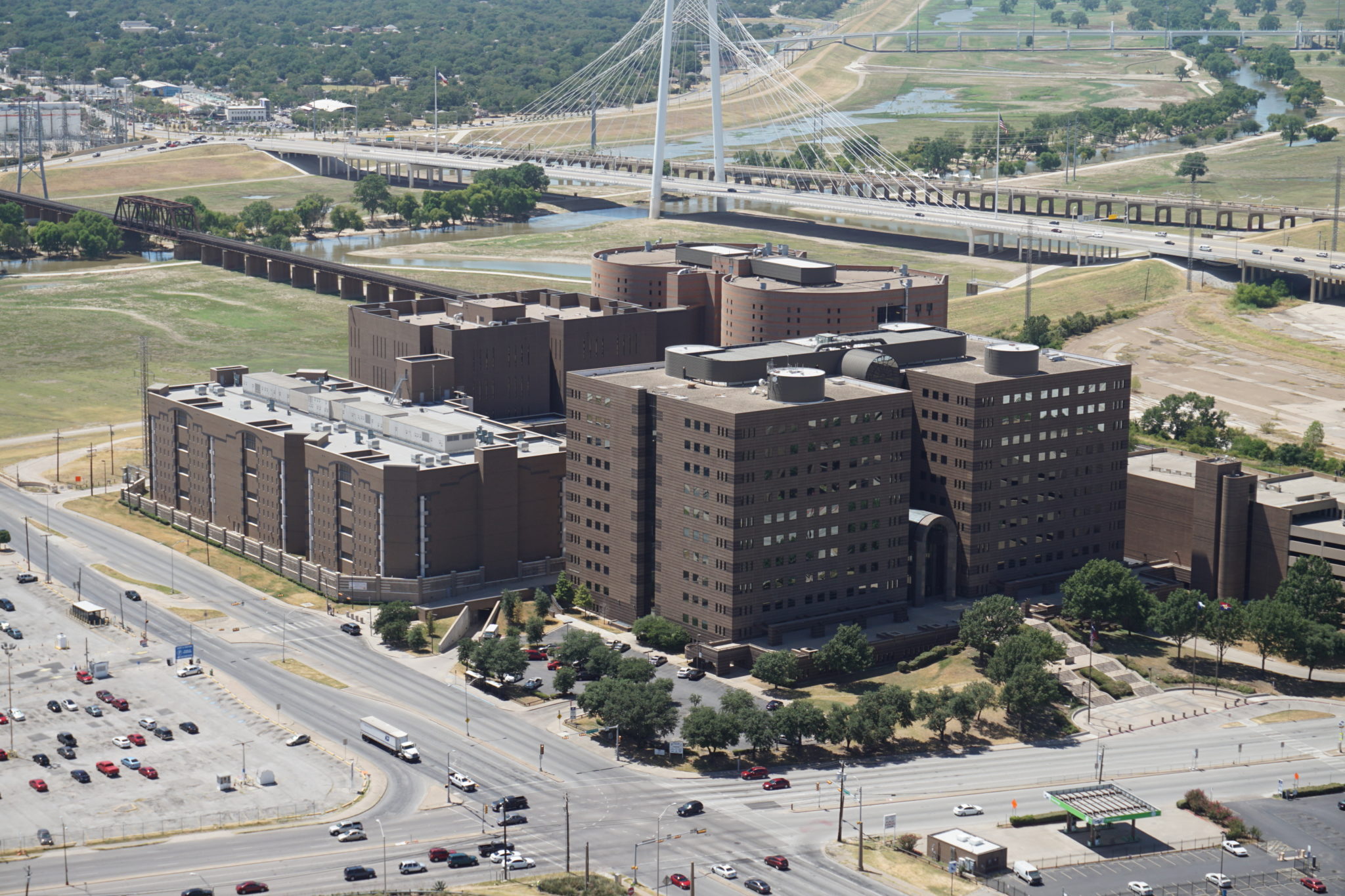
Valdez’s department routinely failed those inspections until 2010, about halfway into her career as sheriff. Federal oversight ended the following year after the jail passed its second state inspection in a row.
In her campaign for governor, Valdez touts her version of this history, saying she shepherded the department through a difficult period. Reformers who worked with her on improving conditions at the jail remember her as a willing partner. “I truly think she came in wanting to make positive changes,” said Elisabeth Holland, who for years advocated for women incarcerated in Dallas County. But to Holland, who says she regularly attended meetings with Valdez and other stakeholders about jail conditions, Valdez seemed to struggle with the entrenched, calloused culture she inherited at the lockup. Holland also used words like “acquiescent” and “polite” to describe Valdez’s style of leadership.
“She tried to change that culture within the jail, but I don’t know how influential she could really be,” Holland said. “She certainly tried, but with those jails it’s like turning a ship. And sometimes ships don’t want to be turned.”
Valdez began her DNC speech acknowledging the brutality of the past but ended it defending the police of today.
In a brief interview with the Observer, Valdez only spoke in general terms about her time as sheriff and the challenges she faced at the county’s beleaguered jail, challenges that didn’t entirely end when federal oversight stopped. In 2013, a federal jury sided with the family of a homeless man who died of severe pneumonia 18 hours after he was booked into the jail on a misdemeanor public lewdness charge. The jury awarded the man’s family $400,000 and the federal judge on the case, Ed Kinkeade, wrote in an opinion that Valdez had made a conscious decision not to train jail staff on how to recognize basic medical distress.
“Valdez says that she does not want her guards assessing prisoners’ medical needs, because it would be ‘too much,’” Kinkeade wrote. “Valdez does not want this type of training or responsibility for her officers because ‘for an assessment to happen by the officer, I’d have to have 100 more officers to do that. And the taxpayers would kill me.’”
Two years later, Valdez’s deputies were accused of killing a troubled man who went to the jail on his own seeking help. Like her DNC speech, the event came at a particularly tense moment for law enforcement officials across the country.
–
Surveillance video shows Joseph Hutcheson stumbling into the front lobby of the Dallas County downtown jail the morning of August 1, 2015. The video is silent, so it’s unclear exactly what Hutcheson said to make people scatter as he approached and then plopped down on a wooden bench. Witnesses later said he was high, confused and begging for help. He was also unarmed.
Hutcheson’s heart eventually stopped as deputies struggled to subdue him on the ground. A medical examiner determined his death to be a homicide.
The case came at a particularly tense time for Valdez. It had been just two weeks since Sandra Bland’s suicide in a Waller County jail cell put in-custody deaths at the top of the national debate around policing.
Jeff Hood, a young Baptist preacher and activist for police accountability in North Texas, helped Hutcheson’s family organize a press conference outside the jail to demand the release of the video that showed his final moments. But when they tried to hold a vigil in the lobby where Hutcheson died, Valdez sent deputies in riot gear to disperse the crowd.
“We weren’t staging a violent takeover,” Hood told the Observer. “Everybody was just kind of praying and hugging each other. Then she sends out these guys that look like stormtroopers.” Finally, a month after Hutcheson’s death, Valdez released the video but later fought to keep records in the case from being publicly disclosed. Last year, a Dallas County grand jury cleared the deputies involved of any wrongdoing, but the family is still pursuing justice. In July 2017, they filed a lawsuit that claims sheriff’s department staff waited seven minutes to start CPR after his heart stopped.
Two days after Valdez announced her run for governor, Hood published a column in the Dallas Morning News titled, “Joseph Hutcheson’s Death Shows Why Lupe Valdez Isn’t Qualified to Be Governor.”
“We weren’t staging a violent takeover. Everybody was just kind of praying and hugging each other. Then she sends out these guys that look like stormtroopers.”
Valdez has been defensive about the Hutcheson case. “Law enforcement have to make decisions on a split-second,” she told the Observer this month. “Somewhere along the way, something may go wrong, but that doesn’t mean the whole department is a bad department. That doesn’t mean that things haven’t been taught correctly.”
Scott Palmer, the lawyer representing Hutcheson’s family in their lawsuit against the department, credits Valdez with leaving the jail in a less-miserable state than she found it. But he still says the place is a “nightmare.”
“People still go to that jail and leave a shattered person,” he told the Observer. “I still have people call me and say, ‘It’s been the most horrific 72 hours of my life, I couldn’t get my medications, I thought I was going to die in there.’”
Not exactly the kind of ringing endorsement you can use on the campaign trail.
Caption for top image: Dallas County Sheriff Lupe Valdez speaks to members of the media after arriving at the county clerk’s office to congratulate couples applying for same sex marriage licenses Friday, June 26, 2015, in Dallas. AP Photo/Tony Gutierrez
